| Umělec magazine 2009/2 >> Vienna"s Off Spaces – A Vibrant Scene | List of all editions. | ||||||||||||
|
|||||||||||||
Vienna"s Off Spaces – A Vibrant SceneUmělec magazine 2009/201.02.2009 Ursula Maria Probst | scene | en cs de |
|||||||||||||
|
Vienna's off space scene is currently experiencing a veritable boom. Its artistic interventions have a most stimulating impact on the city's cultural dynamics. All the time there are new temporary art spaces emerging. With names like Pro Choice, clubblumen (club flowers), Bell Street Project, Saprophyt, or Ve:sch they allude to socio-political aspects of art practices respectively the dissolution of conventional notions of art in their own participation in the construction of urban sociotopes. Even though the term “off space” underwent significant re-codings since the 1970s, from illegal, subversive squatting projects to communally subsidized temporary spaces, the open non-profit structures of off spaces still have the advantage of greater flexiblity compared to the utilitarian logic of established institutions.
Admittedly, Vienna is not half as attractive as Berlin for young visual artists—rents are high and, unlike New York or London, Vienna does not yet have the reputation of a place-to-be on the international scene. However, the city’s profile as an attractive place for art fairs like the Vienna Artweek has been diligently improved in recent years. Irrespective of such cultural-economic master plans, the brisk activities of the off space scene, which fills empty premises, basements, flats, factories, administrative buildings or market places throughout the city demonstrate the city’s artistic potential as well as its demand for such exhibition sites. Artist Mario Grubisic’s concept for the ViennaBiennale, which he organized in 2006 and 2008, was based on the open structures of these off spaces. In 2008 the ViennaBiennale took place at off space venues like Schauplatz gallery in Leopoldstadt or Hundsturm on the other side of the city, places that usually fail attract little international attention. Unlike established art institutions and their bloated working procedures, which depend on subsidies, sponsors, quotas, and the economic exchange system of galleries and the art market, non-commercial projects are mostly based on the initiatives of artist, architects, or freelance curators. As non-profit organizations they are capable of a level of spontaneity and improvization often lacking in the sedate apparatus of institutions. While galleries concentrate in central parts of the city, off spaces are dispersed and singular. They often emerge from existing studio collectives or react to vacancies on short notice. Contrary to Berlin or New York, where there is a long tradition of inexpensively using for temporary art sites empty buildings or urban waste land without much bureaucratic hassle, in Vienna such strategies for acquiring space only in the last three years have been put into practice on a large scale. These projects avoid the traps of gentrification that so often endangered their international predecessors. Temporary use of facilities has the advantage that rents are usually significantly lower and thus affordable for the short term. Even in cases where some communal or state subsidies are granted for these projects, the organizers mostly work for free or only very little remuneration. These project spaces differ from venture businesses like galleries in that here the artists themselves are responsible for set-up and organizing, for public relations and networking. Off space artists are required to multitask in a team with flat hierarchies. Their motivations are a dedicated just-do-it mentality, a wish to be involved in the shaping of artistic values and to counter the drastic devaluation of relevant notions of art by the art market, as well as a desire to intensify interventionist art, gender art, and critique of institutions. The down-side of this precarious, unpaid cultural work is that due to economic exhaustion off spaces often expire after two or three years. Precarious living conditions and self-exploitation accompany off space work. Scrapped subsidies, scarce anyway and hardly enough to pay the rent, may thus well result in the termination of an off space. There are no guarantees for subsidies once given and even after perennial successful organizing subsidies may be cancelled with the argument that these off spaces become too established. Furthermore, a particular off space may be integrated into the existing gallery system, as was the case for Dana Charkasi, or for Andreas Huber, the manager of the project space Offspace. Though off spaces rarely deal with political questions explicitly, they usher in a paradigm shift in exhibition practices through interventionist activity, site-specific art that infiltrates the urban exterior, through their social vibrancy as well as through a critique of production conditions and an urban public. The venues of off spaces are frequently left unchanged. Artistic interventions often incorporate these sites’ earlier functions and make use of their location on main roads and thoroughfares. Artists Christoph Holzeis, Luisa Kasalicky, Birgit Knoechl, and Rainer Spangl, who run off space Swingr—Raum auf Zeit, have organized sixty exhibitions from 2006 till 2008. In the case of Swingr, the incentive to create an artist run space came from a need for a show room, and the opportunity to rent a space next to the artists’ studio. Swingr presents itself as a production site as well as an experimental art lab when it celebrates the closing of one exhibition and the opening of the next exhibition on the same night. For more than five years, off space Auto has been curated in a basement by artists Gerald Grestenberger, Jacob Lena Knebl, and Bruce La Mongo. Here, the main objective was to give visibility to still marginalised questions of transsexuality and gender discourse. Art projects like unORTung or ZimmerKücheKabinett act at short notice and occupy flats and salesrooms that are vacant for only two to seven days. An appartment in Kaiserstraße, a factory building on Ottakring, a market on the outskirts of Vienna that has been vacant for ten years, and a patio cafe in Vienna’s leisure district Donauinsel have already been venues for the project series unORTung organized by artists Andrea Maria Krenn and Veronika Barnas. Their chosen word unORTung alludes to the practice of artistically marking sites that have been ignored by city development. The focus is on spaces that lie decidedly outside the established art world. This strategy has also been adhered to by the exhibition series Space Invasion, which ran from 2006 until 2008. Bell Street Project Space in Vienna's currently hip second district is the result of an initiative by artists Marita Fraser and Alex Lawler and their international networking. The recourse to key episodes from modernity and modernism as a working principle of engaged artists has through minimalist interventions created spatial intersections and passages in recent years. A small venue with a shop window in an alleyway ensures a lively exchange with the urban setting. Random passers-by are turned into art consumers. Artist Flora Neuwirth defines her project space clubblumen as a utopic enterprise, a social sculpture, where spaces of art and spaces of everyday life mingle. Clubblumen is designed as a social sculpture, a performative installation rather than as an exhibition site, where, during opening hours, a dish of the day may be exchanged for a donation, drinks are available at self-service, and art magazines are on display. The location, a former florist shop, has been left in its former condition. The only piece of furniture is a transportable “kitchen subject.” A diverse program consists of events like film screenings, lectures, performances, and clubblumen’s own ‘iTuned-by’ track. Warhol’s factory, Kippenberger’s office, and Gordon-Matta Clark’s food project are forerunners in this process of disturbing the art market by social activism. Compared to the adjacent fourth district, where Schiefmühlengasse, one of Vienna’s gallery districts, is located, art in the fifth district spaces are sparse. Many artists live here, however. This points to another relevant aspect: artists realize their projects in close vicinity to where they live, and thus create an open infrastructure of social and artistic exchange —a community. The projects Ve:sch and Saprophyt highlight the figure of the ‘prosumer,’ an art consumer or art collector who becomes active and contributes to production networks by offering his or her space for free or only a little fee. Saprophyt, a location managed by artists Barbara Kapusta and Stephan Lugbauer, is itself an experiment that is supposed to result in a social sculpture. An empty, so far unused room, is taken as a starting point for architect Thomas Osterwinter’s intervention by the means of light. Other artists, who will exhibit their work at Saprophyt in the future, are to comment on their predecessors. An exchange program with off spaces from Mexico is integrated into the concept. Pro Choice, an art space run by Lucie Stahl, Annette Südbeck, and Will Benedict, focuses on an international program. One of its objectives is to act spontaneously and free, by which Pro Choice distinguishes itself from established institutions. Another objective, this one alluded to by the name taken from political activism, is to instigate controversial discussions. However, a proximity to art institutions and galleries is intended not only by Pro Choice’s first district location. Galleries like Krinzinger Projekte and Georg Kargl Box have already taken up the concept of Sub-spaces as a vibrant platform. The project Open Space defines itself as a center for transnational art projects connecting different regions and thus disputing any kind of marginalization often associated with off spaces. At times, initiator and director Gülsen Bal curates exhibitions herself, and she also invites international projects from Crazy Kuratur Juraj Carny to Daphne Dragona. Open Space especially pushes interdisciplinary collaborations between international artists, curators, critics and cultural producers that reflect the effects and tendencies of the EU enlargement. Here, once more, off spaces incite a debate on the effects of geographic, social and cultural conditions on identity and identification. The fact that BEWAG Foundation—after its bankruptcy and the subsequent change of the executive board of BEWAG Bank with resulting budgetary consequences—broadened its definition of art to include a space that makes use of off space strategies, reveals the structural change that the lively activities of Vienna’s off space scene have effected in the city’s art mileu. The term ‘off space’ has turned increasingly into a positive feature denoting flexible, inexpensive exhibition activities. Opposed to a logic hypes and mandatory up-to-date-ness, the off space scene has rather become interested in generating sociotopes, the emergence of which is intensified by regional and international networking. There still is a strong desire to learn how artistic production may effect social change. Thus, in spite of the various attempts at appropriation, off space strategies still have a reputation of autonomy and counter culture.
01.02.2009
Recommended articles
|
|||||||||||||
|
04.02.2020 10:17
Letošní 50. ročník Art Basel přilákal celkem 93 000 návštěvníků a sběratelů z 80 zemí světa. 290 prémiových galerií představilo umělecká díla od počátku 20. století až po současnost. Hlavní sektor přehlídky, tradičně v prvním patře výstavního prostoru, představil 232 předních galerií z celého světa nabízející umění nejvyšší kvality. Veletrh ukázal vzestupný trend prodeje prostřednictvím galerií jak soukromým sbírkám, tak i institucím. Kromě hlavního veletrhu stály za návštěvu i ty přidružené: Volta, Liste a Photo Basel, k tomu doprovodné programy a výstavy v místních institucích, které kvalitou daleko přesahují hranice města tj. Kunsthalle Basel, Kunstmuseum, Tinguely muzeum nebo Fondation Beyeler.
|







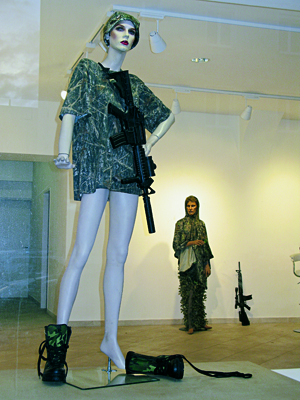














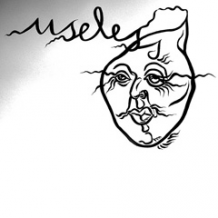











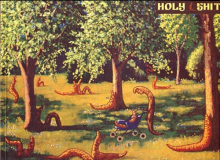
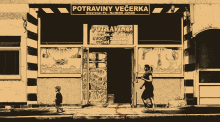
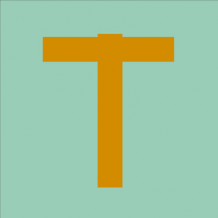
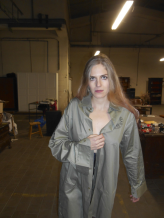


 New book by I.M.Jirous in English at our online bookshop.
New book by I.M.Jirous in English at our online bookshop.
Comments
There are currently no comments.Add new comment